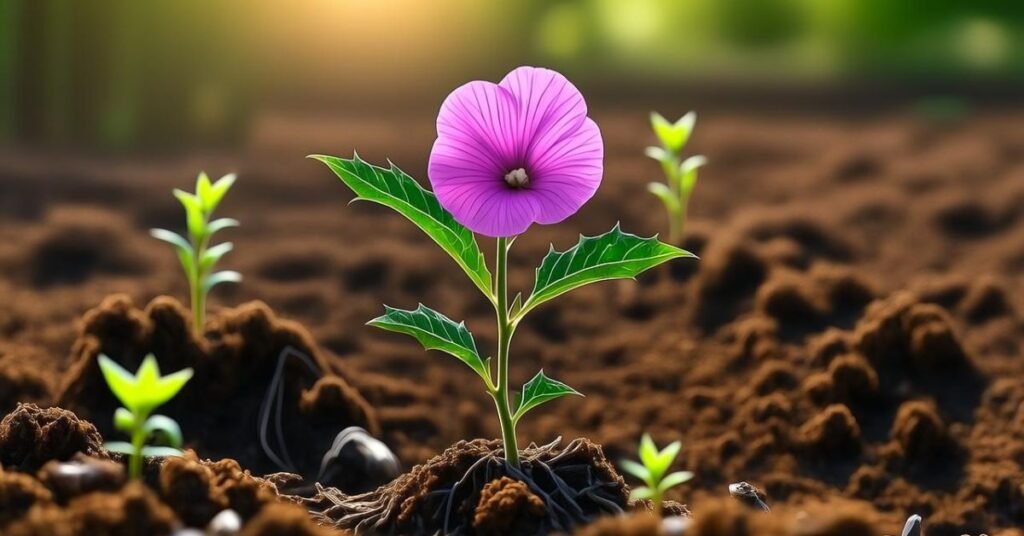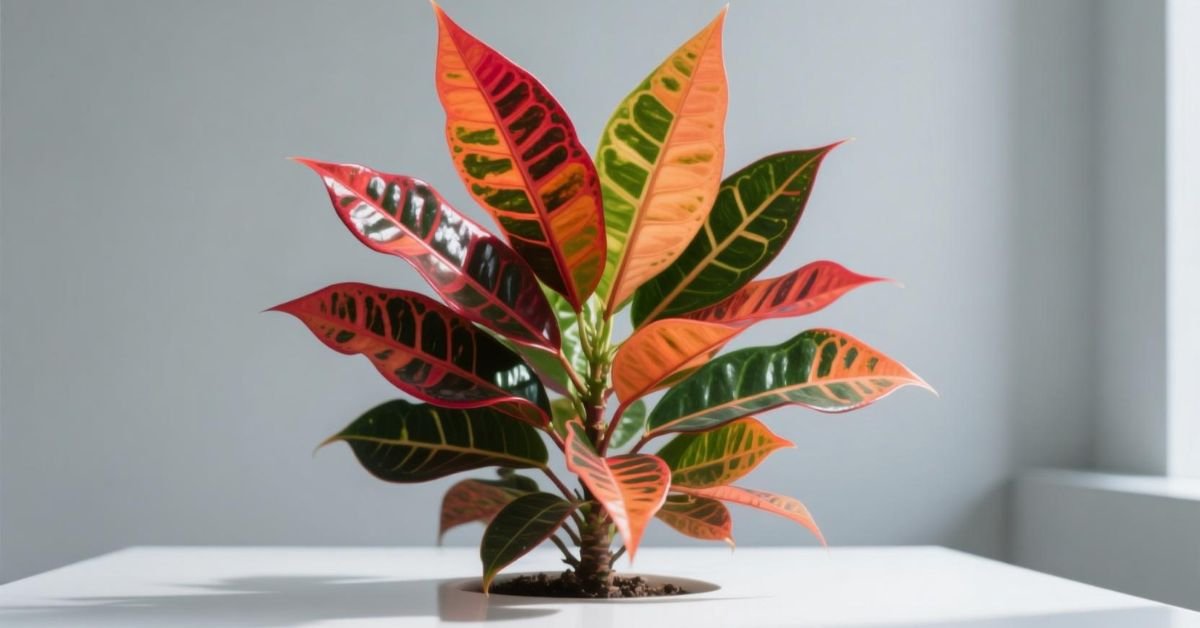Introduction
The Croton Petra plant is a popular tropical houseplant. It is known for its bright, colorful leaves in shades of yellow, orange, green, and red. In warm, humid climates such as those found in Southeast Asia and the Pacific Islands, it thrives. This plant adds a bold, vibrant touch to indoor spaces and gardens. It belongs to the Euphorbiaceae family and is often grown for its stunning foliage.
If you’re tired of dull, green plants, the Croton Petra might be your new favorite. Its leaves look like they were painted with autumn colors. With the right care, it becomes a living piece of art in your home. It’s a great pick for those who love plants with personality and drama.
This plant loves bright, indirect light and moist, well draining soil. It can be a bit fussy but is worth the effort. Regular watering, occasional misting, and avoiding cold drafts will keep it happy. Whether you’re a plant lover or a beginner, the Croton Petra plant is a beautiful challenge.
Croton Petra
Croton Petra is a stunning houseplant loved for its bold and colorful leaves. Each leaf has a mix of green, yellow, red, and orange tones. The colors become more vibrant with bright light. This plant brings a tropical feel to any room or garden. It’s a favorite for plant lovers who enjoy unique and eye catching foliage.
The Croton Petra needs warm temperatures and high humidity to thrive. It prefers indirect sunlight and well drained soil. Overwatering or sudden temperature changes can cause leaf drop. With regular care and the right spot, it can grow beautifully indoors. It’s a little demanding but truly rewarding.
Propagating Croton Plants
Propagating Croton plants is simple and fun. The best method is stem cuttings. Choose a healthy stem with at least 3 to 5 leaves. Clean scissors should be used to cut it just below a node. Remove the lower leaves and dip the cut end in rooting hormone.
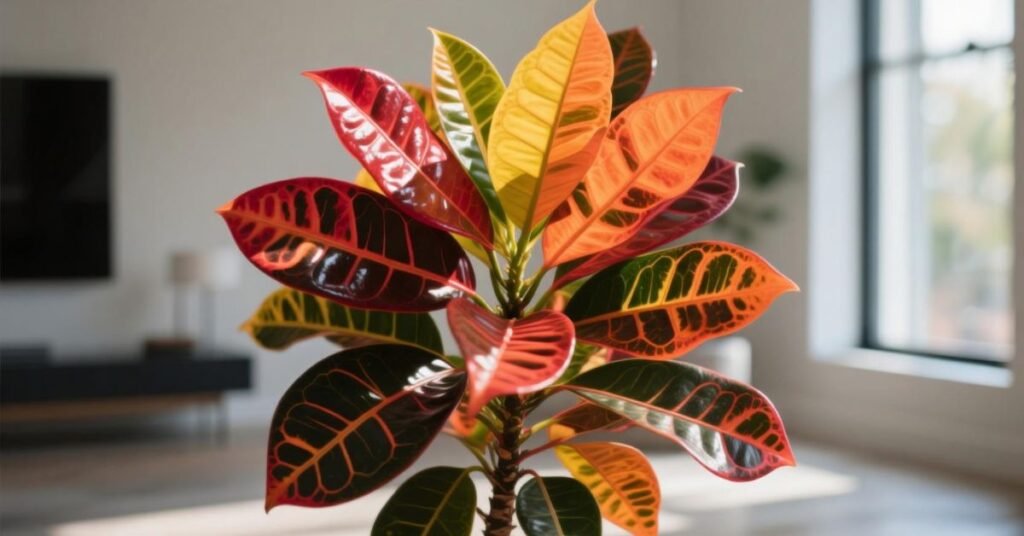
Place it in water or moist soil. Keep the cutting in a warm spot with bright, indirect light. Roots will start to grow in a few weeks. Once rooted, transfer it to a pot. With care and patience, you’ll have a new Croton plant to enjoy.
Petra Croton Light Requirements
Petra Croton loves bright, indirect light. The more light it gets, the more vibrant its colors become. Avoid placing it in low light, as the colors will fade. Direct sunlight can burn the leaves, so filtered light is best. A sunny window with sheer curtains works well. Rotate the plant occasionally to ensure even growth. Light plays a big role in keeping your Croton Petra healthy and colorful.
Here’s a simple table to help you understand its light needs:
| Light Condition | Effect on Petra Croton |
| Bright Indirect Light | Best for vibrant color and healthy growth |
| Direct Sunlight | Can cause leaf burn or scorching |
| Low Light | Leads to dull colors and weak growth |
| Filtered Sunlight | Safe and ideal for balanced development |
Pruning
Pruning helps keep your Croton Petra neat and healthy. Trim away any dead, yellow, or damaged leaves. Use clean, sharp scissors or pruning shears. Cut just above a leaf node to encourage new growth. Pruning also helps shape the plant and control its size. Pruning is best done during the growing season, such as spring or summer. Don’t remove too many leaves at once. With regular pruning, your plant will stay full, vibrant, and attractive.
Types of Croton Plants
Croton plants come in many beautiful varieties. Each type has unique leaf shapes, colors, and patterns. They are all part of the same family but look very different. Some have thin leaves, while others are broad and bold. Here are some popular types of Croton plants:
- Petra : Known for its large, colorful leaves in red, yellow, and green.
- Gold Dust : Features green leaves with bright yellow speckles.
- Zanzibar :Has thin, long leaves in shades of red, purple, and green.
- Mammy :Curly leaves with vibrant red, orange, and green colors.
- Magnificent :Displays a mix of colors with dotted or speckled patterns.
How to Get Croton Plants to Bloom
Croton plants rarely bloom indoors, but it’s possible with the right care. They need plenty of bright, indirect sunlight. More light encourages flowering and enhances leaf color. Keep the plant in a warm spot, away from cold drafts. Temperature should stay between 65 to 85°F. Consistent warmth helps trigger blooming.
Humidity also plays a key role. Mist the plant often or use a humidifier. Water regularly but avoid soggy soil. Let the topsoil dry slightly between waterings. Feed the plant with a balanced fertilizer during the growing season. With patience and proper care, your Croton may surprise you with small, star shaped flowers.
Why Are the Leaves on My Croton Limp and Drooping?
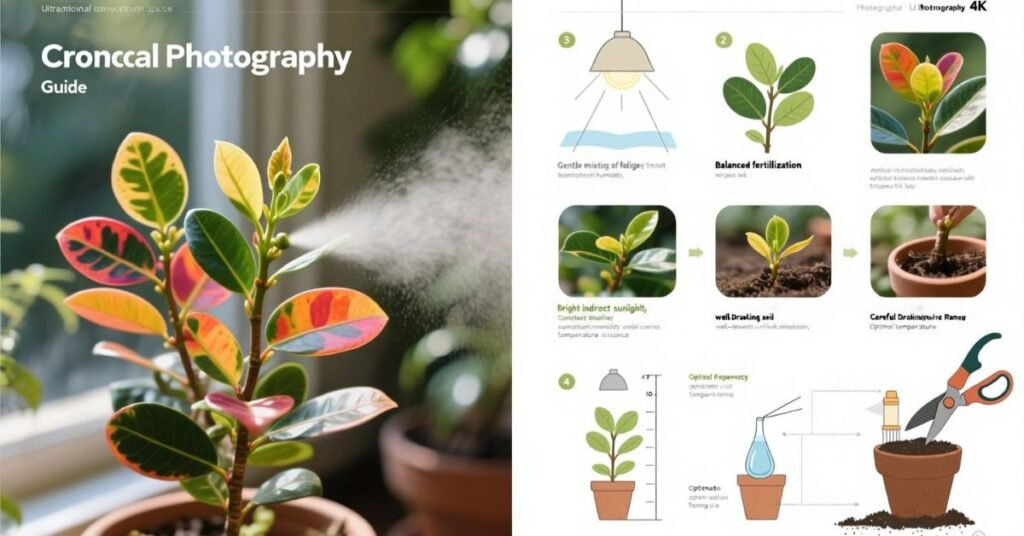
Limp and drooping leaves on your Croton are often a sign of stress. The most common cause is overwatering or underwatering. Check the soil if it’s too wet or too dry, adjust your watering routine. Sudden temperature changes or cold drafts can also shock the plant. Low humidity may cause the leaves to droop as well. Make sure your Croton gets enough bright, indirect light. If the problem continues, inspect for pests. A quick response can help your plant recover and thrive again.
Is Croton Petra Poisonous to Cats
Yes, Croton Petra is poisonous to cats. It contains a milky sap that can be harmful if chewed or ingested. Symptoms may include drooling, vomiting, or skin irritation. Keep the plant out of reach of curious pets. If your cat shows signs of poisoning, contact a vet immediately. It’s best to choose safer plant options if you have pets at home. Always research plant safety before bringing them indoors.
Problems With Croton Plants
The Croton plant is beautiful, but it can suffer from a few common problems. Leaf drop is the most frequent issue and often caused by sudden changes in light or temperature. Overwatering can lead to root rot. Dry air may cause browning leaf edges. Pests like spider mites or mealybugs can also appear. Identifying the issue early helps your Croton recover quickly. Below is a table to help you spot and fix these problems:
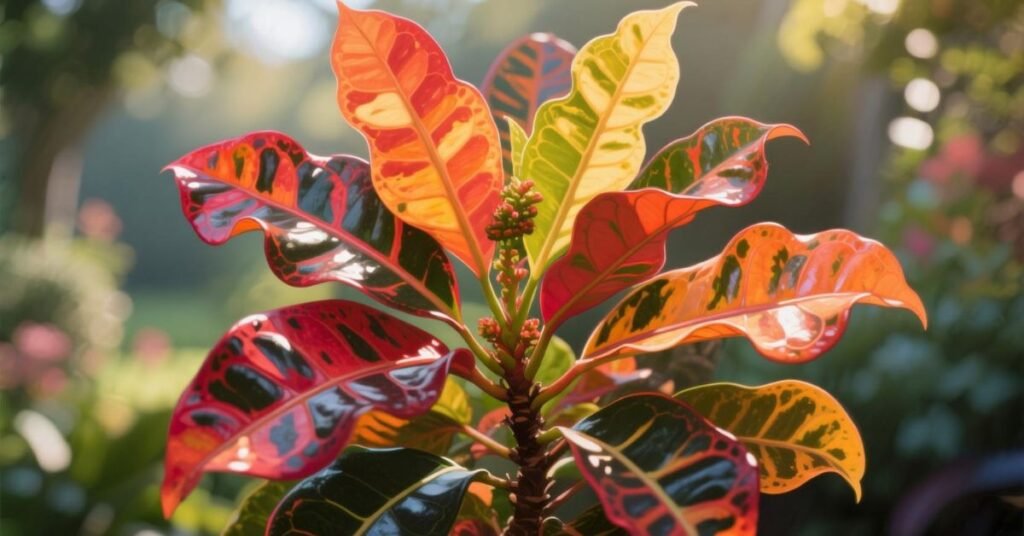
| Problem | Cause | Solution |
| Leaf Drop | Sudden light or temperature change | Keep light and temperature consistent |
| Yellow Leaves | Overwatering or poor drainage | Water less and use well draining soil |
| Brown Leaf Edges | Low humidity | Increase humidity or mist the plant |
| Pests | Spider mites or mealybugs | Wipe leaves and use insecticidal soap |
| Faded Colors | Not enough light | Move to a brighter spot with indirect light |
How to Care for Your Croton
Caring for your Croton is simple with the right steps. Place it in a spot with bright, indirect light. The top inch of soil should be watered when it feels dry. Overwatering can cause root rot, so avoid it. Keep the plant in a warm room away from cold drafts. Croton loves humidity, so mist the leaves often. Drainage holes should be provided in the pot and you should use well draining soil. Feed it with a balanced fertilizer during spring and summer. Prune dead or damaged leaves to keep it healthy. With regular care, your Croton will stay vibrant and beautiful.
Conclusion
The Croton Petra plant is a bold and colorful choice for any plant lover. In addition to adding beauty and life to indoor spaces, it is also very practical. With proper light, water, and care, it can thrive for years. Though it needs a little attention, the reward is worth it. Keep it warm, humid, and pest free. Whether you’re a beginner or an experienced gardener, the Croton Petra brings vibrant charm to your home
FAQs
1. How often should I water my Croton Petra plant?
When the top inch of soil feels dry, water it. Avoid overwatering to prevent root rot.
2. Why are my Croton’s leaves falling off?
Leaf drop is usually due to stress from temperature changes, low light, or overwatering.
3. Can I grow Croton Petra outdoors?
Yes, but only in warm, humid climates. It doesn’t tolerate cold or frost.
4. Does Croton Petra need fertilizer?
Yes, feed it with a balanced fertilizer every 4 to 6 weeks during the growing season.
5. Is Croton Petra safe for pets?
No, it’s toxic to cats and dogs if ingested. Keep it out of reach of pets.

